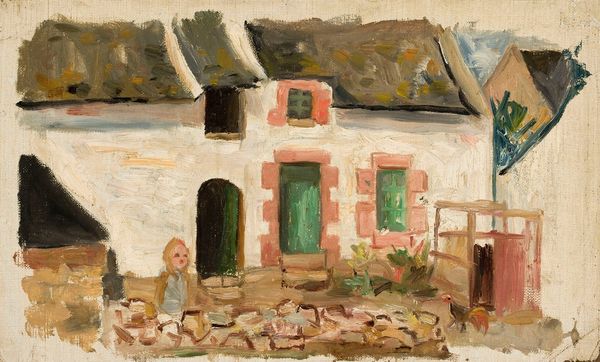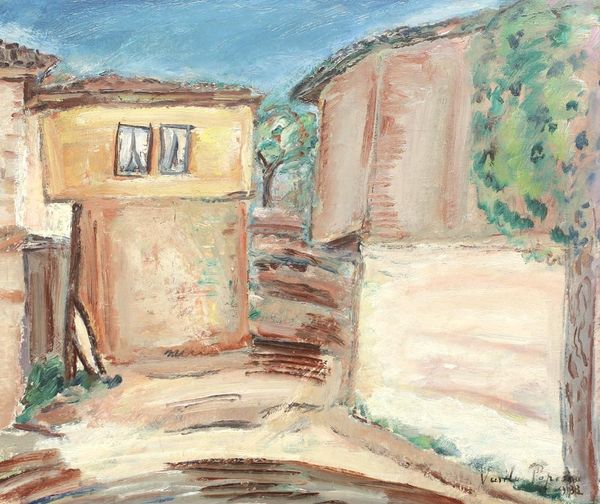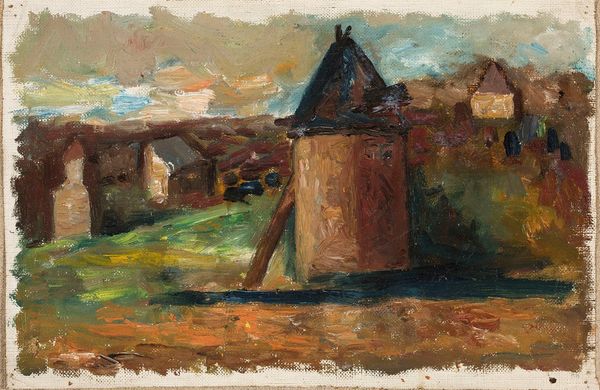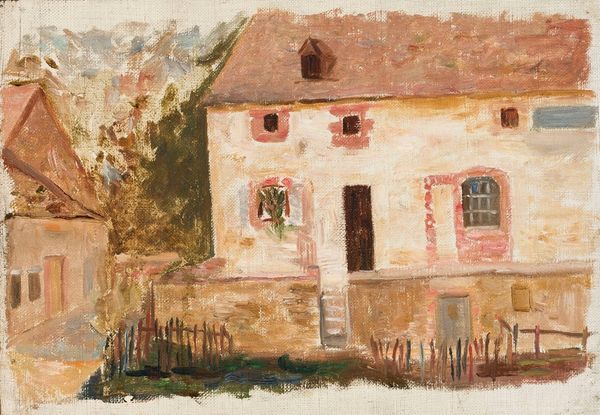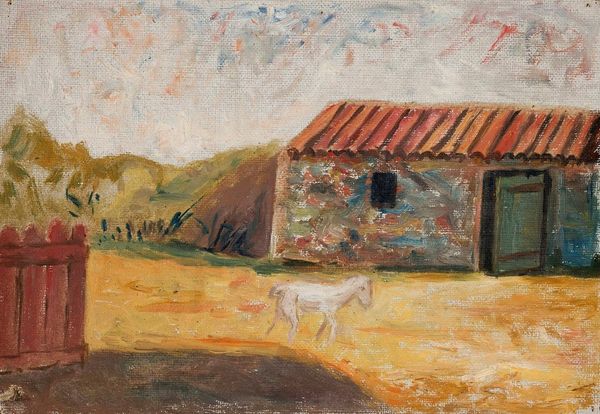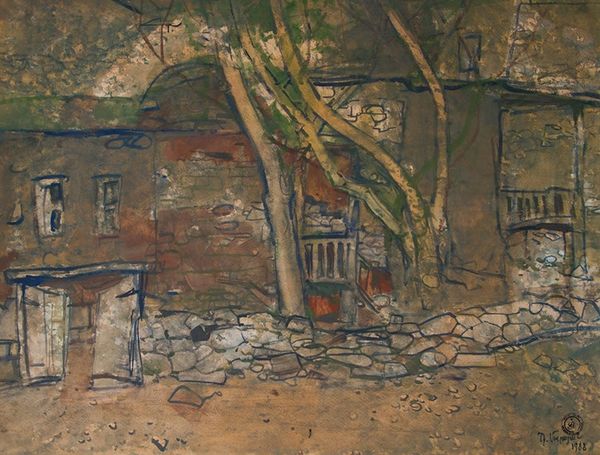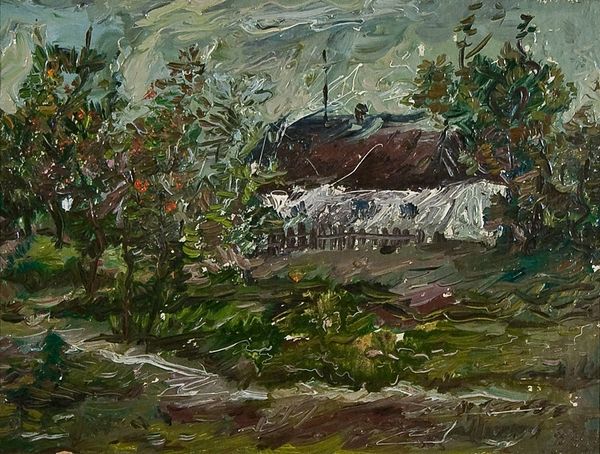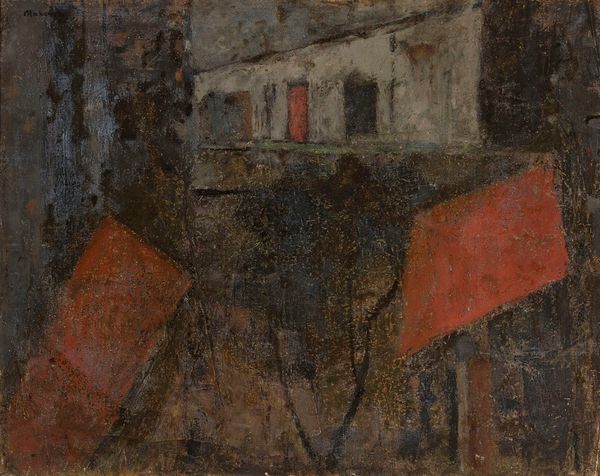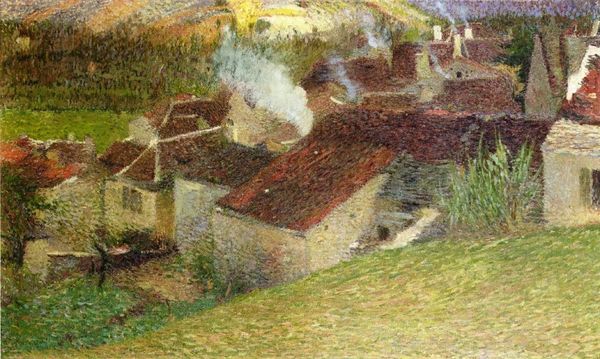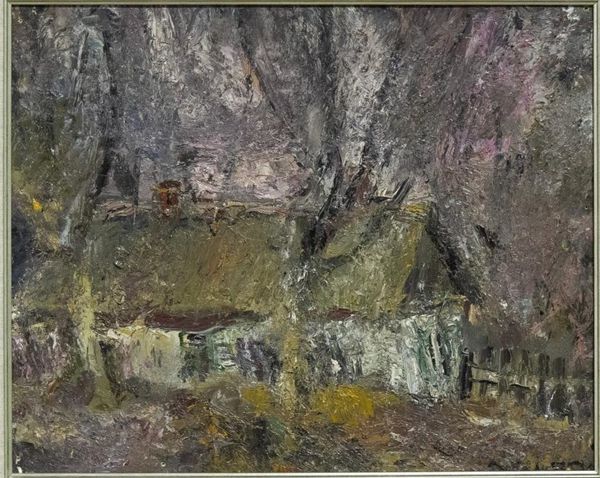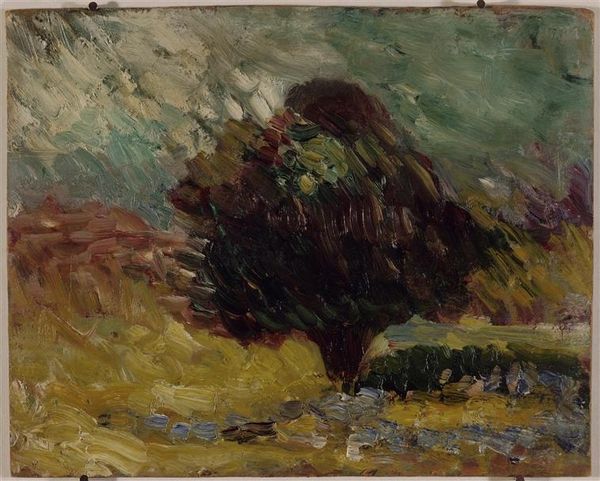
painting, oil-paint
#
portrait
#
painting
#
oil-paint
#
landscape
#
figuration
#
oil painting
Copyright: Public Domain: Artvee
Curator: This is "Little Girl in Front of a House," painted in 1931 by Tadeusz Makowski, executed in oil paint. Editor: My first impression is one of charming naïveté. The texture, achieved through the application of thick impasto, brings a sense of tactile materiality. The house feels monumental, looming over the almost ghost-like figure of the child. Curator: I concur regarding the tactility. What interests me most is how the geometric shapes—the rectangles of the house, the slight angularity of the child’s posture—create a fascinating compositional tension. There’s a clear manipulation of form and perspective. Editor: But also consider what's being represented here: humble abodes. The brushstrokes suggest a rugged surface, perhaps indicative of modest materials sourced locally for construction. This resonates with a certain honesty in depicting working-class existence. Curator: It's compelling how Makowski utilizes a muted color palette, predominantly earth tones, with only slight color variances on the little girl, to construct the overall composition. There's a sense of deliberate reduction. Editor: And doesn’t that sparseness contribute to a broader understanding of the economics? Consider how these rough materials point toward specific labor conditions and socio-economic strata. We’re seeing, perhaps, a very subtle commentary. Curator: Yes, it pushes against formal qualities alone, engaging larger discussions, through color and shape relationships, of socio-political and cultural themes embedded in representation. A constant exchange. Editor: I'm especially struck by the child’s dress. That hint of faded color provides insight into resourcefulness and thrift, and even how textiles hold cultural value for different economies of making. Curator: Makowski is certainly more than just a painter. There’s complexity in how formal design elements interact. The balance of dark and light also contributes to a sense of nostalgia and simple living. Editor: By delving into the artwork’s materiality and modes of construction, it’s really impossible not to perceive how Makowski's decisions reveal far more than is initially apparent on the surface. Curator: Indeed. Looking through different critical approaches allows one to truly unlock artwork dimensions.
Comments
No comments
Be the first to comment and join the conversation on the ultimate creative platform.
